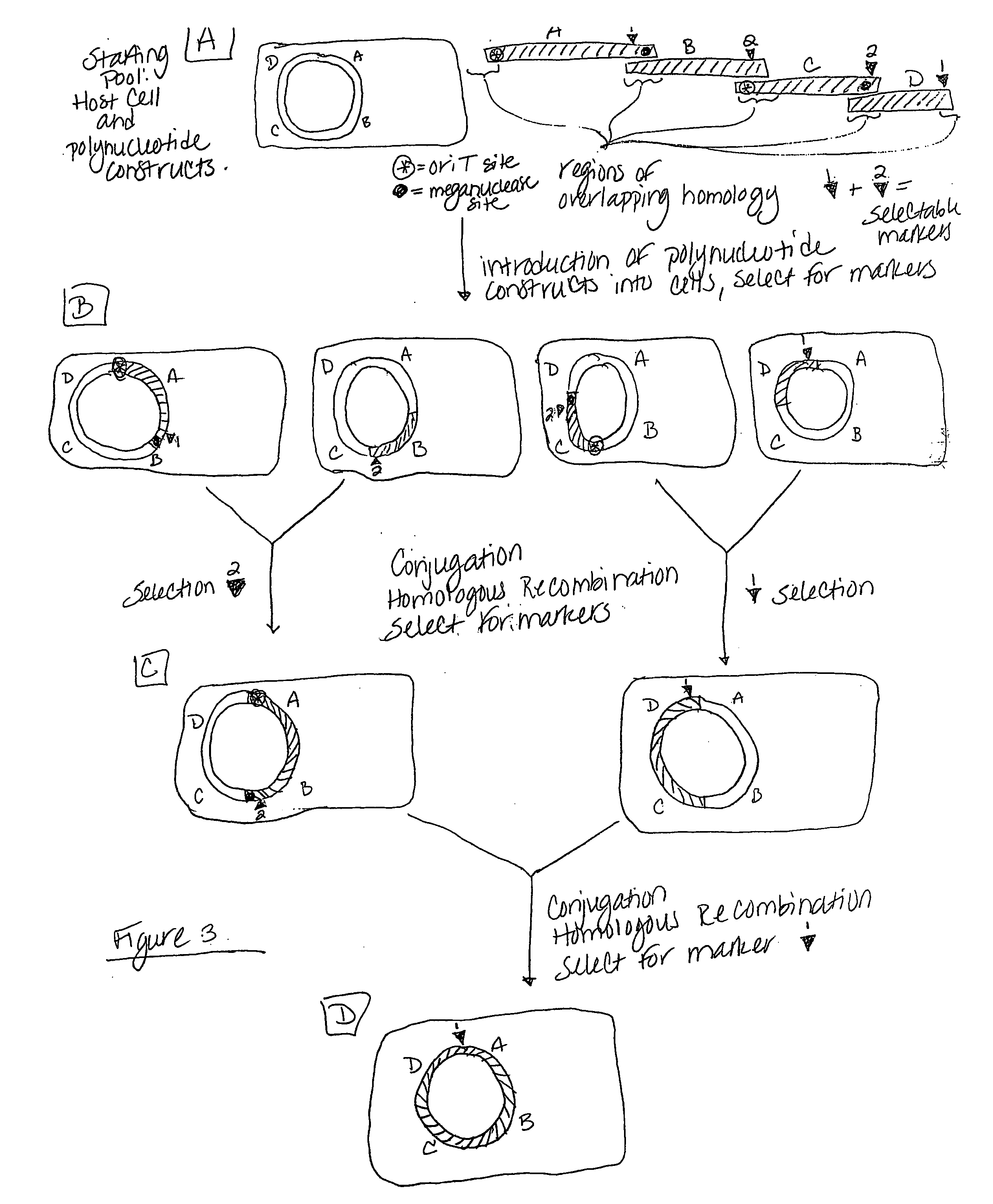Heirarchical assembly methods for genome engineering
a genome engineering and heirarchical technology, applied in the direction of stable introduction of dna, biochemistry apparatus and processes, fermentation, etc., can solve the problems of time-consuming and laborious procedures, the genomes of the cells used in these processes have little variation from the genomes of natural cells, and the traditional approach to modification of cellular genomes has various limitations. , to achieve the effect of increasing safety
- Summary
- Abstract
- Description
- Claims
- Application Information
AI Technical Summary
Benefits of technology
Problems solved by technology
Method used
Image
Examples
Embodiment Construction
1. Definitions
[0102] The term “codon remapping” refers to modifying the codon content of a nucleic acid sequence without modifying the sequence of the polypeptide encoded by the nucleic acid. In certain embodiments, the term is meant to encompass “codon optimization” wherein the codon content of the nucleic acid sequence is modified to enhance expression in a particular cell type. In other embodiments, the term is meant to encompass “codon normalization” wherein the codon content of two or more nucleic acid sequences are modified to minimize any possible differences in protein expression that may arise due to the differences in codon usage between the sequences. In still other embodiments, the term is meant to encompass modifying the codon content of a nucleic acid sequence as a means to control the level of expression of a protein (e.g., either increases or decrease the level of expression). Codon remapping may be achieved by replacing at least one codon in the “wild-type sequenc...
PUM
| Property | Measurement | Unit |
|---|---|---|
| Stability | aaaaa | aaaaa |
| Recombination enthalpy | aaaaa | aaaaa |
Abstract
Description
Claims
Application Information
 Login to View More
Login to View More - R&D
- Intellectual Property
- Life Sciences
- Materials
- Tech Scout
- Unparalleled Data Quality
- Higher Quality Content
- 60% Fewer Hallucinations
Browse by: Latest US Patents, China's latest patents, Technical Efficacy Thesaurus, Application Domain, Technology Topic, Popular Technical Reports.
© 2025 PatSnap. All rights reserved.Legal|Privacy policy|Modern Slavery Act Transparency Statement|Sitemap|About US| Contact US: help@patsnap.com



